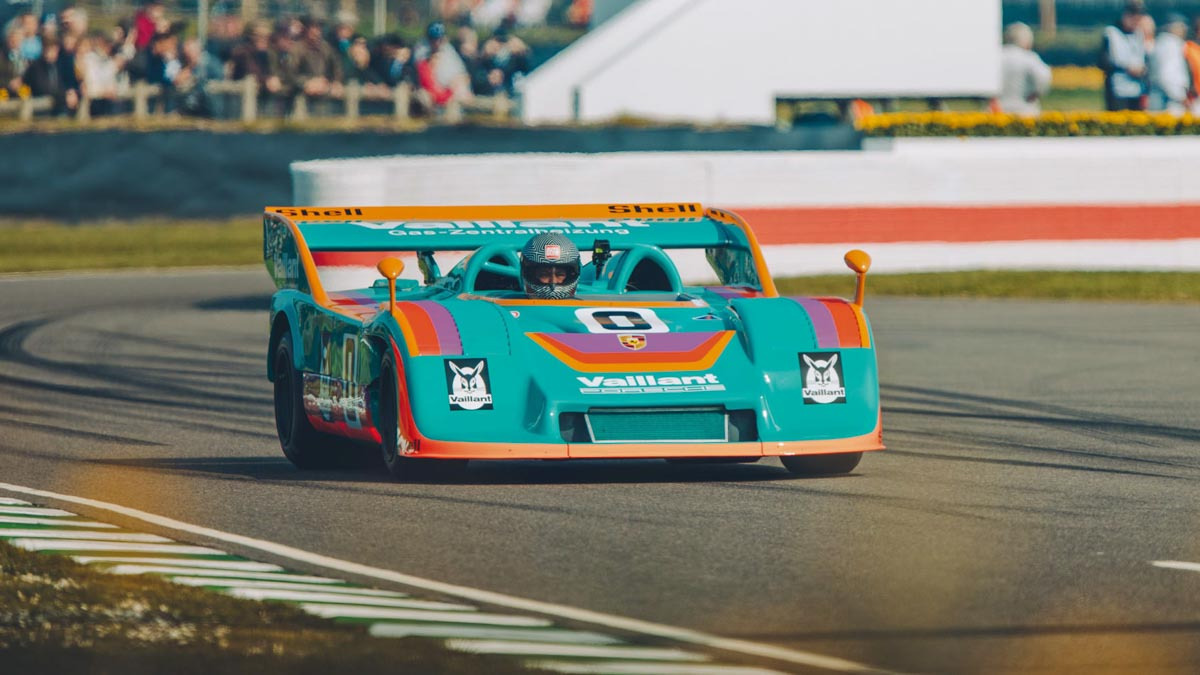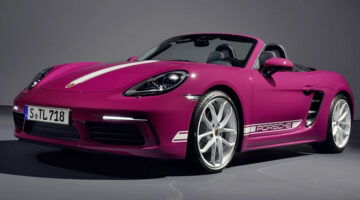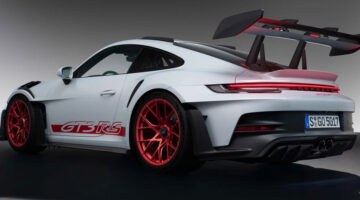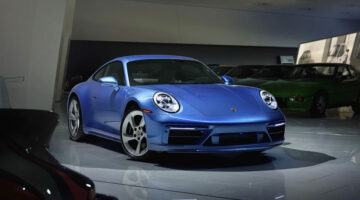Porsche’s 917 is 50. To mark the occasion, we look back at its spectacular racing career, and its troubled beginnings, before getting behind the wheel of a freshly restored 1100bhp example
Race winner. Widow-maker. Film star. Legend. If ever there was a racing car to capture the imagination it was the Porsche 917. Born of an unflinching aspiration to win the world’s greatest endurance race, conceived by one of the world’s greatest automotive engineers, driven by the fastest talents of the day, immortalised by Hollywood and revered by race fans for half a century, the 917 is the single most fearsome, famous and charismatic competition car the world has ever seen.
In today’s sanitised, safety-conscious times it’s shocking to learn quite how nasty early 917s were to race. Quotes from those drivers who survived this most deadly of eras are refreshingly pithy, but betray a dark humour akin to that of veterans of the battlefield. And no wonder given the 917’s first two races of the 1969 World Sportscar Championship were at Spa-Francorchamps and the Nürburgring Nordschleife, two of the world’s most demanding and malevolent circuits. It was around these brutal, tree-lined tracks that Porsche’s drivers would try to get to grips with the ferociously potent but woefully underdeveloped 917 prior to entering that year’s Le Mans 24 Hours.
Two cars were fielded for Spa, but only one raced, Porsche’s crack duo of Jo Siffert and Brian Redman electing instead to use the tried-and-tested 908 after experiencing hair-raising high-speed instability when testing the 917. That left Gerhard Mitter and Udo Schütz to make the new car’s race debut. After qualifying 8th – and experiencing the same terrifying handling traits – Mitter retired the 917 with engine failure after just one race lap. He’s thought to have over-revved the flat-12 at the start, but few would have blamed him if it was less the result of a missed gear and more an act of self-preservation.
> Porsche Taycan receives more performance and options for 2021
For the Nürburgring, Porsche enlisted Frank Gardner and David Piper – neither of whom were factory drivers – to campaign the 917 in its first ‘home’ race. Given Porsche put its primary efforts behind half a dozen race-proven 908/2s, the 917’s growing reputation as a widow-maker-in-waiting was clearly not without foundation. Persuasion came in the form of an irresistible quantity of Deutschmarks, but after bringing the car and himself home in one piece at the Nürburgring (in the wake of a 1-2-3-4-5 finish for the 908s…), Gardner declined a similarly lucrative invitation to drive the car at Le Mans, as he explained in an interview with the motorsport writer Nigel Roebuck: ‘The money was great, but I’d had my lesson. I never really wanted to be the quickest bloke in motor racing – I just wanted to be the oldest. And that car was certainly going to interfere with those plans…’
Ferdinand Piëch’s ruthless pursuit of Le Mans-winning power and pace is well documented, as is the 917’s otherworldly performance, but its design stuck to Porsche’s proven principles of a lightweight tubular spaceframe chassis clad in ultra-slippery, low-drag bodywork. Given both Lotus and Lola had embraced the structurally stiffer and more resilient aluminium monocoque in Formula 1 and sportscar racing, in some respects the 917 was rather old-school. Still, Piech preferred evolution to revolution, electing to follow what can best be described as a four-thirds power-to-weight philosophy, even though slotting the monstrous new 4.5-litre flat-12 into a development of the 908’s compact and featherweight frame pushed the driver further forward in the car so that their feet were ahead of the front axle.
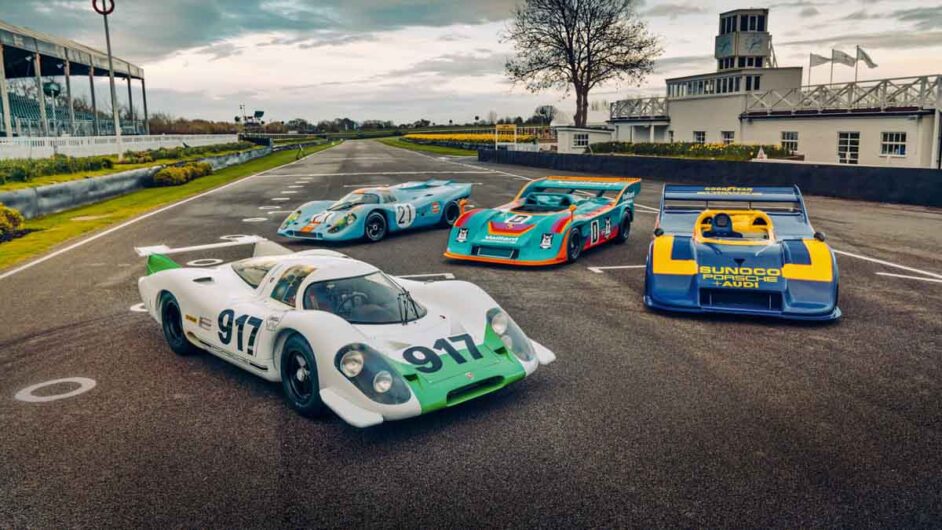
The 917’s tubular alloy frame and perilous driving position might have made it more dangerous in the event of a crash, but once its wonky aerodynamics were sorted, the 917 was also irresistibly fast. After an intensive season of development it had been transformed – visually and dynamically – into a car that was ballistically quick and, crucially, super-stable. To a man, the once ashen-faced factory drivers loved it.
Vic Elford, one of the quickest and most versatile drivers of his or any era, drove the 917 in almost all guises. His description of this rapid progression from being virtually undriveable to almost unbeatable is not only emblematic of Porsche’s miraculous engineering turnaround, but reveals the stoicism and courage inherent in Elford and his contemporaries.
‘Until the 917 arrived, probably none of us had ever been over 322kph,’ he said, ‘but suddenly this monster was doing more than 230, and it was very, very unstable. In the original 917, as you approached the kink [at Le Mans], you couldn’t just snap off the gas pedal – if you did, the rear of the car would come off the ground, and start steering the front. Not very nice. By the following year, though, it was a different car.
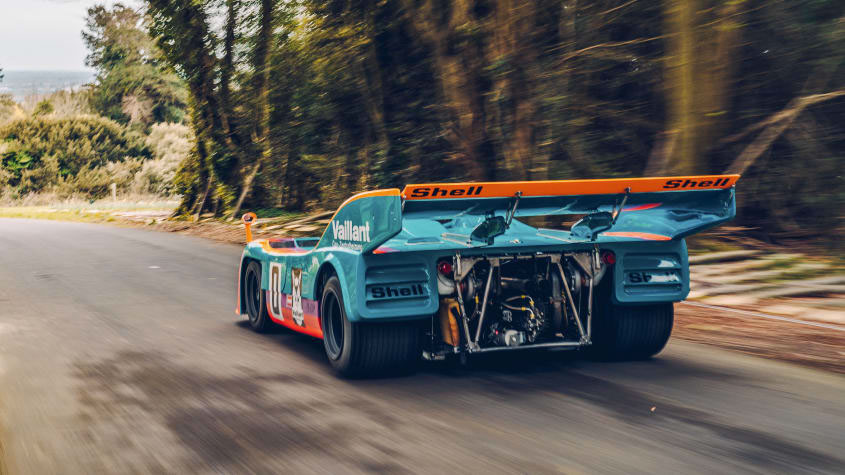
You’d get up to a bit over 386kph on Mulsanne. Every lap you’d arrive at the kink at that speed, and OK, it took a few laps before I was brave enough to do it, but finally I was able to take it flat – even at night. Quite seriously, it was much easier to do it flat than to lift off. Wonderful, wonderful car…’ And it really was a ‘wonderful, wonderful car’, as its racing record went on to prove. After that dicey debut season, the 917 was dominant at Le Mans in both 1970 and ’71, with cars racing in Kurzheck and Langheck (short and longtail) configurations and sporting the now iconic Gulf colours, the red and white ‘Salzburg’ livery of the 1970 winner, and the spectacular Martini swirls of the 2nd-place machine. The ’71 Le Mans 24 Hours would also see 917s set four records: fastest qualifying lap, fastest race lap, highest top speed (388kph!) and longest distance covered.
A rule change for the 1972 season outlawed the big-engined prototype class in favour of 3-litre prototypes powered by F1-derived engines. However, the 917 raced on through ’72 and ’73, most famously in monstrous twin-turbocharged 917/10 and 917/30 form in the spectacular ‘no rules’ Can-Am series. With broad, bewinged bodywork and open cockpits, these cars were in complete contrast to the earlier 917s, but dominated in similar fashion. Monstering the typically weird and wonderful array of rival machinery – most notably the once dominant McLarens – team boss Roger Penske and his formidable driver line-up of George Follmer and Mark Donohue proved all-but invincible.
In its final 917/30 iteration the flat-12 displaced 5.4 litres and developed 1580bhp in qualifying trim. The motor was wound back to 1100bhp in race form, but this still gave the 820kg machine a power-to-weight ratio of almost 1400bhp per ton. Unsurprisingly, 917s won both the ’72 and ’73 Can‑Am series before rule changes triggered by the oil crisis saw Porsche officially withdraw from the series in ’74, though Brian Redman made a one-off appearance in a 917/30, qualifying on pole and finishing 2nd.
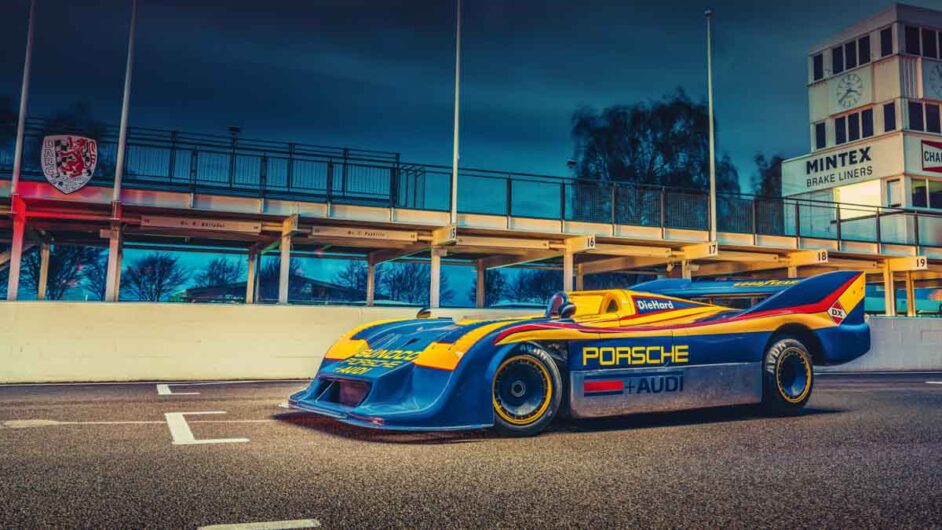
However, the 917 wasn’t quite finished with the limelight. In 1975 Mark Donohue took a 917/30 to a new closed-course lap record of 355.922kph at Talladega. Six years later, Porsche independent Kremer Racing responded to rule changes and entered a heavily updated 917 – the 917 K-81 – into the 1981 Le Mans 24 Hours. Qualifying 18th, it retired after seven hours following a collision with a backmarker. Kremer fielded the K-81 once more, in the Brands Hatch 1000km at the end of the ’81 season, where it proved to have race-leading pace in the hands of Bob Wollek and Henri Pescarolo. Sadly, front suspension failure led to retirement, bringing the Porsche 917’s remarkable career to a close.
But fifty years after its debut, the legend lives on, and one Sunday in April we drove an example…
Porsche 917 drive
As part of the 917’s 50th birthday celebrations, Porsche brought a handful of examples of its fabled racer to Goodwood for the 77th Members’ Meeting. Bookending the legendary car’s career were 917 chassis no. 001 from 1969 and Mark Donohue’s Sunoco-liveried 917/30 from 1973, while sandwiched in between were a Gulf-liveried 917K from 1970, the 917/10 no. 002 privately entered and raced by Jo Siffert in the 1971 Can-Am series, and 917/30 chassis no. 001 fresh from a full restoration to 1975 specification by the Porsche factory after spending the last 40-plus years in a museum.
These fabulous cars would be driven in a number of high-speed demonstrations during the weekend by Porsche factory racing alumni Richard Attwood, Dterek Bell, Mark Webber and Neel Jani, plus a trio of journalist interlopers going by the names of Chris Harris, Andrew Frankel and Dickie Meaden. Believe me, the honour was all ours…
I was entrusted with 917/30 no. 001. Resplendent in its lurid green ’75 Vaillant livery, this 1100bhp brute was originally built as the factory development car and driven mostly by Mark Donohue. It then enjoyed a sporadic but successful racing career in the 1973, ’74 and ’75 German Interserie championship in the hands of Vic Elford and Herbie Müller.
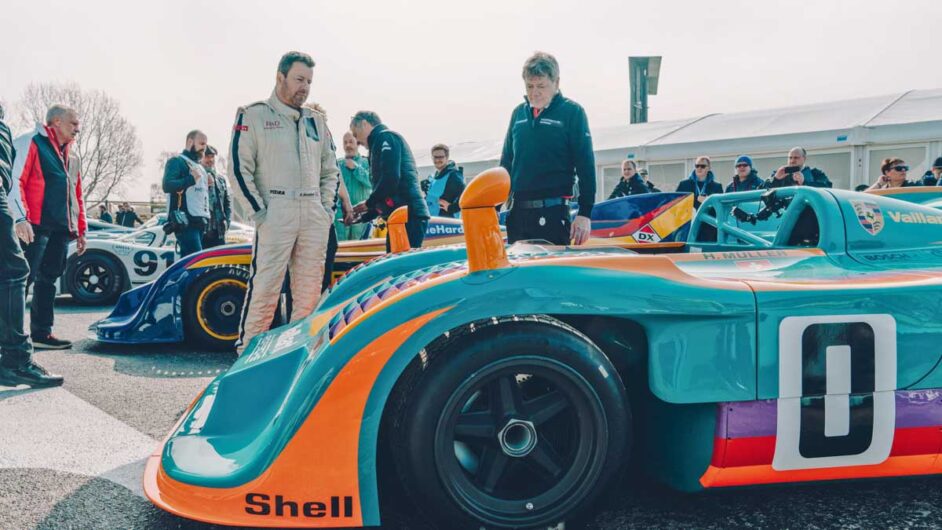
As is often the case with Porsche Museum cars, driving the 917/30 is a remarkably laid-back affair. You might expect umpteen forms to be signed in blood, stern lectures and a long list of dos and don’ts, but the reality is a warm smile from a mechanic, a quick check of the belts and seat position, advice to shift at 7000rpm or maybe a few hundred more, and confirmation that yes, it is delivering the full 1100bhp. Gulp.
We trundle out from the assembly area and complete a brisk(ish) lap to form up on the start line. Once there, we’re sent off at ten-second intervals. I’m sent last, which somewhat frustratingly means by the time I get away, Harris and Webber are long gone. The good news is the motor has managed to clear itself after a rather spluttery formation lap, and is now pulling with increasing vigour when it hits boost.
After a lap I can see Frankel in the near distance, with the red 917/10 just ahead of him. There are worse traffic jams to be stuck behind than a pair of 917s, but after politely pondering what was said in the official driver’s briefing (namely don’t overtake, don’t overtake and, er, please don’t overtake) I rapidly reach two crucial conclusions. The first being I’m unlikely to drive this car again, which immediately leads to the second: it’s better to beg for forgiveness than ask for permission.
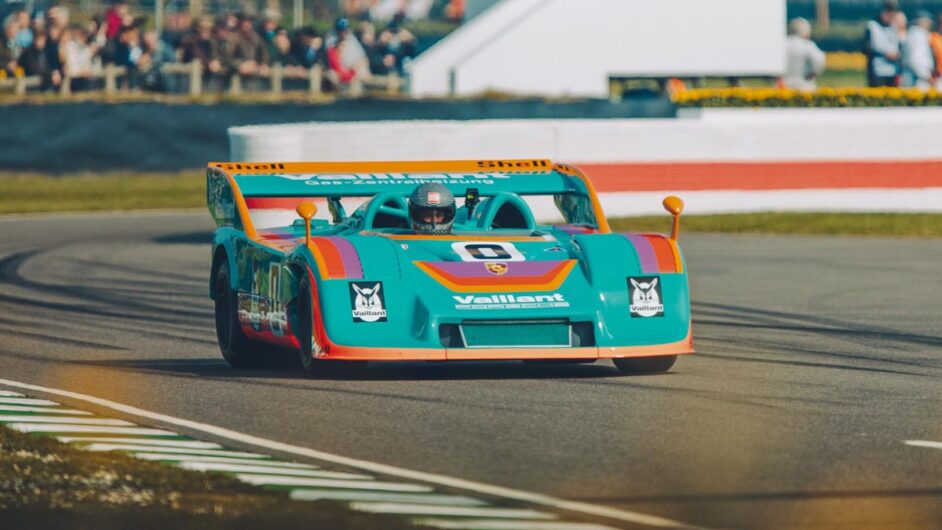
With the hope of giving chase to Harris and Webber, I decide to nip by Frankel in the Sunoco car, then work my way into a position to safely pass the 917/10. It’s hard to know whether its driver has seen what’s behind him, but I reckon I can surge by safely between the exit of Madgwick and the kink at Fordwater, but just as the volcanic rush of boost arrives, the engine cuts out. No sputter or cough, just snuffed out like a light.
I’ve raced enough old cars to know it’s an electrical failure of some description, so once I’ve stuck my hand in the air and coasted safely to a halt on the grass I start scanning the dash for switches. They’re all Dymo-labelled in German, so I’m hesitant to start prodding at things, especially the one marked with something that sounds a bit fire extinguishery. The only thing left to try is the external ignition master switch, but I can’t reach it without undoing my belts. Thankfully a helpful marshal is on hand and follows my instruction to switch it off and on again in time-honoured IT call centre style.
As luck would have it, the ignition light and fuel pumps come to life. A quick push of the starter fires the motor into life and I rejoin the track. Heartbreakingly, the session is over a lap later, but at least I get to once more feel that otherworldly shove through the gears down the back straight before returning to the paddock.
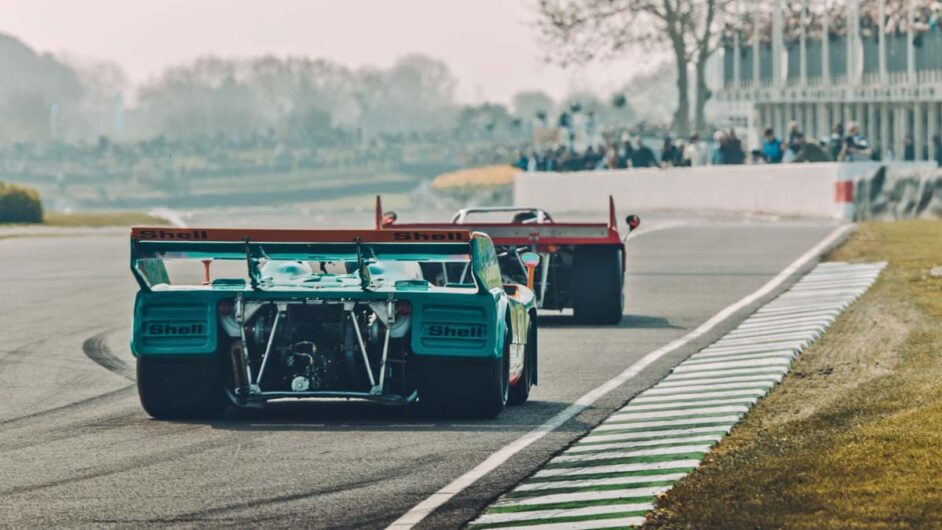
It’s been the briefest and most tantalising of tastes, but the 917/30 has offered some explicit hints as to what it must have been like to race. The driving position – so disconcerting at first – quickly becomes less intimidating, but I doubt you’d ever quite lose the sense of just how much mass is behind you. And because you’re literally sitting over the front wheels, that sense of rapid rotation whenever you make a steering input is intensified. The fast sweeps of Goodwood are not ideal nursery slopes on which to get a feel for the 917/30’s responses, but with every lap there’s a palpable increase in confidence.
The gearshift (synchromesh, in the finest Porsche tradition) is heftily mechanical but clearly defined, while the engine is a roiling dragon of a thing. Its initial bite may be blunted by tall gearing and the slow build-up of boost, but the ferocious and unrelenting acceleration when those two huge, low-slung turbos are spooling is sensational. It actually means you don’t need to be too nervous of your initial throttle applications, but timing must have been everything, as I have no doubt you’d need to apply the throttle earlier and with more insistence in order to ensure the boost arrived just at the right moment. Too late and you’d be becalmed, too soon and you’d be overwhelmed.
To walk that tightrope in a race must have been completely exhilarating. Being trusted to take a few tentative steps along it at Goodwood is something I’ll never forget.
This article originally appeared at evo.co.uk
Copyright © evo UK, Dennis Publishing

